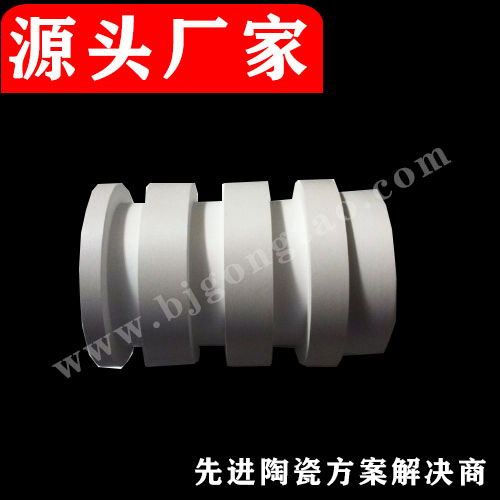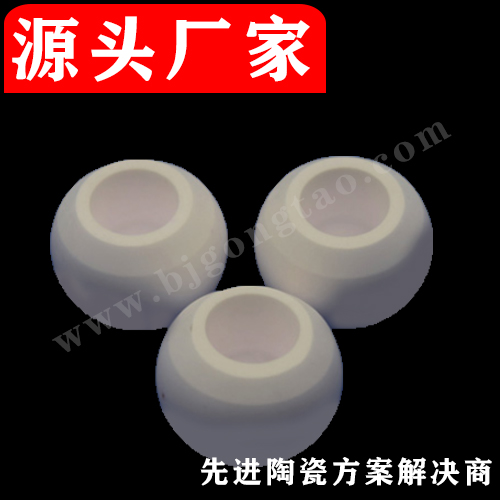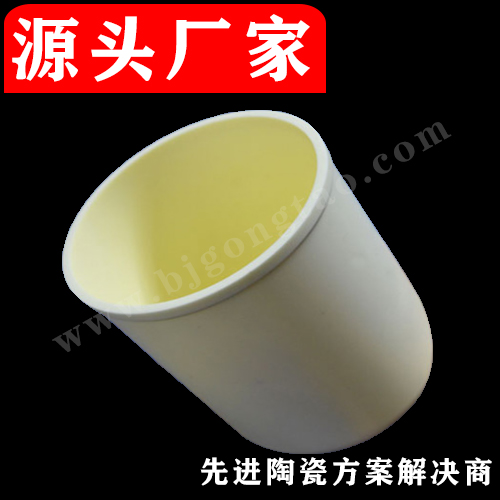
Suzhou Kaifa New Material Technology Co., Ltd.
Email:heqing@szkfxc.com
Email:sales@szbknm.com
Email:bkxc.bonnie@gmail.com
A look at common high thermal conductivity ceramic materials
The heat transfer performance of ceramic materials has an extremely important impact on its application fields. Within a certain range, increasing the thermal conductivity of ceramic materials through specific methods will increase its ability to conduct heat, convection and heat radiation, and further expand its application fields . High thermal conductivity ceramic materials are mainly oxides, nitrides, carbides, borides, etc., such as polycrystalline diamond ceramics, AlN, BeO, Si 3 N 4 , SiC and other ceramic materials.
1. Polycrystalline diamond ceramics (PCD ceramics)
Diamond has a strong heat transfer capacity. The theoretical thermal conductivity of single crystal at normal temperature is 1642W / m · K, and the measured value is 2000W / m · K. However, large diamond single crystals are difficult to prepare and expensive. During the sintering process of polycrystalline diamond, it is often necessary to add a sintering aid to promote the bonding between diamond powders, so as to obtain high thermal conductivity PCD ceramics. However, in the high-temperature sintering process, the sintering aid will catalyze the carbonization of the diamond powder, so that the polycrystalline diamond is no longer insulated. Diamond small single crystals are often added to thermally conductive ceramics as a reinforcing material to improve the thermal conductivity of ceramics to improve the thermal conductivity of ceramics.
Polycrystalline diamond ceramics are both engineering materials and new functional materials. At present, polycrystalline diamond ceramics have been widely used in modern industry, national defense, high-tech and other fields for their excellent force, thermal, chemical, acoustic, optical, and electrical properties.

Figure 1 Polycrystalline diamond ceramics
2.SiC ceramics
At present, silicon carbide (SiC) is a thermally conductive ceramic material with active research at home and abroad. The theoretical thermal conductivity of SiC is very high, reaching 270 W / m · K. However, because the ratio of surface energy to interface energy of SiC ceramic materials is low, that is, the grain boundary energy is high, it is difficult to sinter high-purity and dense SiC ceramics by conventional methods. When the conventional sintering method is used, a sintering aid must be added and the sintering temperature must be above 2050 ° C. However, this sintering condition will cause the SiC grains to grow and greatly reduce the mechanical properties of the SiC ceramic.
SiC ceramics have been widely used in petroleum, chemical, microelectronics, automotive, aerospace, aviation, papermaking, laser, mining and atomic energy industries. Silicon carbide ceramics have been widely used in high temperature bearings, bulletproof plates, nozzles, and high temperature corrosion resistance. Parts and electronic equipment parts in high temperature and high frequency range.  Figure 2 SiC ceramic
Figure 2 SiC ceramic
3, Si3N4 ceramic
Si 3 N 4 ceramics have excellent properties such as high toughness, strong thermal shock resistance, good insulation, corrosion resistance and non-toxicity, etc., and have been paid more and more attention by researchers at home and abroad. The bond strength, average atomic mass, and crystal anharmonic vibration of silicon nitride ceramics are similar to those of SiC, and they have a theoretical basis for highly thermally conductive materials. The theoretical thermal conductivity of Si 3 N 4 crystal is 200 ~ 320W / m · K, but because the structure of silicon nitride is more complicated than that of AlN, the scattering of phonons is large. Therefore, in the current research, sintered The thermal conductivity of silicon nitride ceramics is much lower than that of silicon nitride single crystals, but at the same time these characteristics also limit their scale promotion and application.

Figure 3 Si 3 N 4 ceramic
As a high-temperature structural ceramic, Si 3 N 4 ceramic has the characteristics of high strength, high temperature resistance, and high thermal conductivity. Among the ceramic materials, its comprehensive mechanical properties are the best, thermal shock resistance, oxidation resistance, wear resistance, and corrosion resistance. Well, it is the first candidate for ceramics for heat engine parts. In the machinery industry, silicon nitride ceramics are used as bearing balls, rollers, ball races, tools and molds, new ceramic tools, pump plungers, and mandrel sealing materials.
4.BeO ceramics
BeO belongs to the hexagonal wurtzite structure. The distance between the Be atom and the O atom is small, the average atomic mass is small, and the atomic packing is dense. In 1971, Slack and Auaterman tested the thermal conductivity of BeO ceramics and BeO large single crystals, and calculated that the thermal conductivity of BeO large single crystals can reach up to 370 W / m · K. The thermal conductivity of the currently prepared BeO ceramics can reach 280 W / m · K, which is 10 times that of Al 2 O 3 ceramics.
BeO is widely used in aerospace, nuclear power, metallurgical engineering, electronics industry, and rocket manufacturing. BeO is widely used as bracket components and assemblies in avionics conversion circuits and in aircraft and satellite communication systems. It also has application prospects in spacecraft electronics. The use of BeO ceramics has a particularly high thermal shock resistance, which can be used in jet type. Used in the fuse of an aircraft. Metal-coated BeO sheets have been used in aircraft drive control systems; Ford and General Motors have used metal-coated beryllium oxide linings in automotive ignitions [13]. BeO ceramics have good thermal conductivity and are easy to be miniaturized. They have broad application prospects in the laser field. For example, BeO lasers have higher efficiency and higher output power than quartz lasers.
5.AlN ceramics
AlN ceramics are currently highly applied materials with high thermal conductivity. The theoretical thermal conductivity of AlN single crystal can reach 3200W / m · K, but due to the inevitable impurity incorporation and defects in the sintering process, these impurities cause various defects in the AlN lattice to reduce the average degree of freedom of phonons. , Which drastically reduces its thermal conductivity. In addition to the effect of AlN lattice defects on its thermal conductivity, the grain size, morphology, and the content and distribution of the second phase of the grain boundary also have important effects on the thermal conductivity of AlN ceramics. The larger the grain size, the greater the average degree of freedom of phonons, and the higher the thermal conductivity of the sintered AlN ceramic, but according to the sintering theory, the larger the crystal grains, the more difficult the polycrystalline ceramics are to sinter.

Figure 4 AlN ceramic
Because AlN is a typical covalent compound, it has a very high melting point. During the sintering process, the atom‘s self-diffusion coefficient is small and the grain boundary energy is high. Therefore, it is often difficult to use conventional sintering methods to produce high purity For AlN ceramics, a sintering aid must be added to promote sintering. In addition, the appropriate combustion aid can also react with oxygen in the lattice to form a second phase, purify the AlN lattice, and improve thermal conductivity.
Common AlN ceramic sintering aids include: Y 2 O 3 , CaCO 3 , CaF 2 , YF 3 and so on. At present, domestic and foreign countries have carried out extensive research on sintering high thermal conductivity AlN ceramics with appropriate combustion aids, and prepared high thermal conductivity AlN ceramics with a thermal conductivity of about 200 W / m · K. The method of adding a sintering aid to sinter high-conductivity AlN ceramics has been widely used in production, but due to the long sintering time, high sintering temperature, and high price of high-quality AlN powder, the production cost of AlN ceramics is high.
References: 1. Sun Kun, Yong Qilong, Pei Hezhong, Research directions and application prospects of high thermal conductivity electrical insulating ceramics, Journal of Kunming University of Science and Technology (Natural Science Edition). 2. Zeng Lingke, Qi Xiaoling, Wang Hui, etc., Research on Thermal Conductivity of Oxide Thermoelectric Materials, Bulletin of the Chinese Ceramic Society. 3. Jiang Qiming, Huang Huining, Meng Qingjuan, Research Status and Prospect Analysis of High Thermal Conductive Ceramic Materials, Ceramics.
Source: Advanced Ceramics Exhibition





